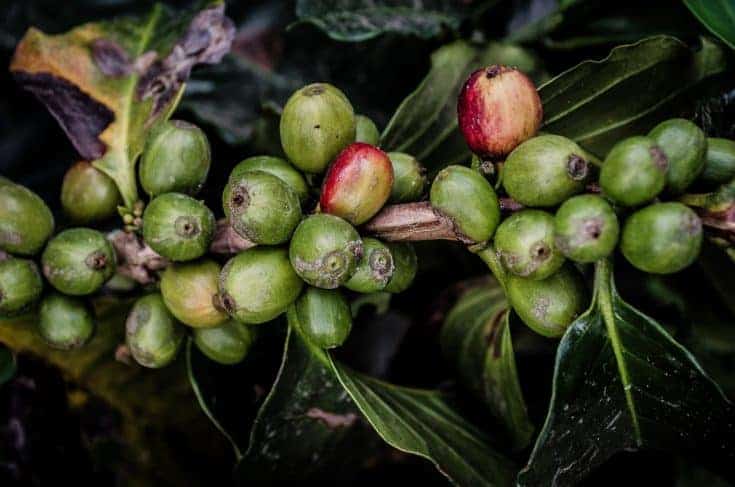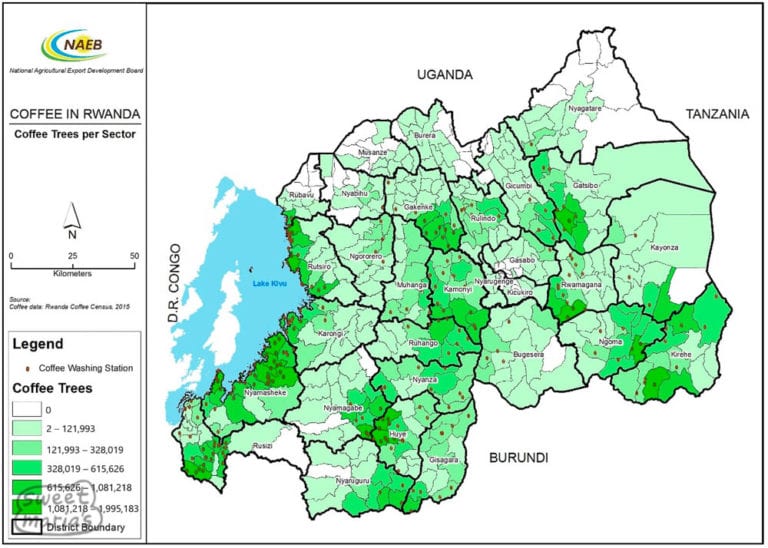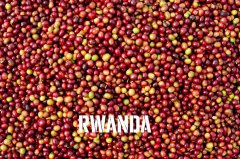Introduction of Fairtrade Fine Coffee Bean Flavor growth characteristics in five Coffee producing areas of Rwanda
Overall, coffee from Rwanda is more rated than coffee from neighboring Zimbabwe and Zambia, but it has not yet been recognized by coffee from Kenya and Tanzania. Rwanda also produces Fairtrade coffee beans.
There are several models from Rwanda on the front street.

Rwanda has a high altitude and is suitable for growing boutique coffee. The main coffee-growing areas have volcanic soil rich in nitrogen. The main coffee growing areas are Virunga, Kivu, Kizi Rift, Akagera and Muhazi. Other coffee growing areas in Rwanda include: Gakenke, Rutsiro, Karongi, Nyamasheke, Nyagatare, Kamonyi, Kayonza, Ngoma, Kirehe, Nyamagabe and Huye.
Gakenke: Jakenko district in the mountains of northern Rwanda, beautiful and difficult: green mountains and mountains coexist with poverty and natural disasters. But the real beauty lies in people who are resilient, resourceful and strive to raise their lives and communities to a better, safer and more sustainable level. Growing coffee is one of the ways they found, and the coffee from the area is very good.
The microclimate here allows high-growing coffee to cause slow ripening, which is important because it enhances the flavor. At Gakenke, coffee cooperatives provide their members with clean and efficient processing plants so that the coffee they carefully grow and pick can retain the quality and flavor of the beans. Traceability through these cooperatives is very transparent-batches of individual farmers can be identified and processing is primitive, as evidenced by Gakenke's recent Presidential Award for Excellence.
Rutsiro:Rutsiro basically tastes like apple pie; mellow fruit sweetness, aromas of baked spices, and a hint of Earl Grey Tea when cooled. Interesting fact: this Rwandan coffee is grown directly from our new Congolese coffee across Lake Kivu. Rwanda water washed coffee 1800-2000 meters above sea level bourbon series coffee.
Karongi: trees from the heirloom bourbon variety and processed in the award-winning Gitesi factory. Thanks to the industry of its growers, the generous support of international aid agencies and the commitment of North American boutique roasters, Rwanda's great potential as a boutique coffee producer has borne fruit over the past decade. Subtle, profound, complex. Aromas of honey, honeysuckle-like flowers, crisp red currants, pistachios and cloves and aromas of cups. Lush, round acidity; lively, syrup-like taste. Honey and flowers saturate the mild dry finish.

Five planting areas in Rwanda
Virunga Virunga
Region: northwest of Rwanda, mountainous area
Altitude: 6200-7200 ft
Coffee from the region is sweet and vibrant and thrives in the fertile volcanic soil of the hometown of mountain gorillas. Look for hickory nutty and smooth shamrock honey. Virunga Coffee makes excellent espresso.
Kivu Kivu
Region: West Rwanda, Lake District
Altitude: 5900-6500 ft
Kivu Coffee comes from a 1600-meter-high hill near Lake Kivu in western Rwanda, delicate and complex. Full of sweet orange and cocoa flavors, with subtle cherry lime and round complexity, they are a very approachable espresso or dripping coffee.
Kizi rift Kizi Rift
Region: central Rwanda, Rift Valley region
Altitude: 6500-7200 ft
Growing in the Central Rift Valley of Rwanda, these coffees are fruity with jasmine scents. Look for nutmeg and roasted chestnut flavors on the butter caramel base. Almost any brewing method is easy to use and fascinating.
Muhazi Muhazi
Region: eastern Rwanda, Lake District
Altitude: 4600-5200 ft
These coffees come from the resort area of Lake Muhazi and are soft, simple and profound. The taste of bitter sweet chocolate and the spicy smoothness of strong black tea make Muhaz beans an excellent choice for dripping coffee.
Akagera Akagera
Area: southeast of Rwanda, wildlife area
Altitude: 4200-4900 ft
Akagera coffee is usually famous for its sharp sour taste and clean taste. They are medium-bodied with hints of blackberries, black tea and cardamom, with aromas of pepper. It's great as dripping coffee or iced coffee.
Important Notice :
前街咖啡 FrontStreet Coffee has moved to new addredd:
FrontStreet Coffee Address: 315,Donghua East Road,GuangZhou
Tel:020 38364473
- Prev

What is a microbatch of coffee? Description of characteristics, flavor and taste of Rwanda micro-batch boutique coffee beans
If you go to some cafes, you should often hear about micro-batches. So what are the micro-batches in boutique coffee? Over time, many terms have been created and adapted to meet the needs and expectations of the boutique coffee industry. One of these terms is microbatches, which are used by many members of the coffee industry to refer to small, exclusive and traceable coffee batches. However, for
- Next

Rwanda coffee beans introduction bourbon gene mutation coffee beans history story flavor taste characteristics description
Rwandan coffee plays an important role in the country's economy, contributing significantly to foreign exchange earnings and monetization of the rural economy. About 95% of Rwanda's coffee plants are high-quality Arabica varieties of bourbon coffee. Relatively small numbers of Catuai and Caturra varieties are also planted. The types of coffee beans grown in Rwanda include Caturra, Catuai, Bourbon (Arab
Related
- Detailed explanation of Jadeite planting Land in Panamanian Jadeite Manor introduction to the grading system of Jadeite competitive bidding, Red bid, Green bid and Rose Summer
- Story of Coffee planting in Brenka region of Costa Rica Stonehenge Manor anaerobic heavy honey treatment of flavor mouth
- What's on the barrel of Blue Mountain Coffee beans?
- Can American coffee also pull flowers? How to use hot American style to pull out a good-looking pattern?
- Can you make a cold extract with coffee beans? What is the right proportion for cold-extracted coffee formula?
- Indonesian PWN Gold Mandrine Coffee Origin Features Flavor How to Chong? Mandolin coffee is American.
- A brief introduction to the flavor characteristics of Brazilian yellow bourbon coffee beans
- What is the effect of different water quality on the flavor of cold-extracted coffee? What kind of water is best for brewing coffee?
- Why do you think of Rose Summer whenever you mention Panamanian coffee?
- Introduction to the characteristics of authentic blue mountain coffee bean producing areas? What is the CIB Coffee Authority in Jamaica?

